Beautiful, bizarre, and sinister: Europe's alternative Christmas tales
Europe23:16, 23-Dec-2023
CGTN
Thomas Wintle
As people prepare to settle down for Christmas, depending on where you are in the world, the stories, symbols and sustenance of the season can be considerably different.
Here's a guide to some of Europe's wilder yuletide tales and traditions - some of which you likely won't be sharing with your children during the holidays, for fear of traumatizing them for many Christmases to come…
Austria's yuletide angels and demons
Heavily associated with the yuletide season because of its majestic Christmas markets and picturesque mountain villages, Austria retains a strong following for the Christian gift-giver Saint Nicholas, as well as his modern Americanized inspiration, Santa Claus. But during the 16th Century, the country was presented with another festive figure designed to pique childrens' imaginations who continues to command influence to this day: Christkind - or "Christ child".
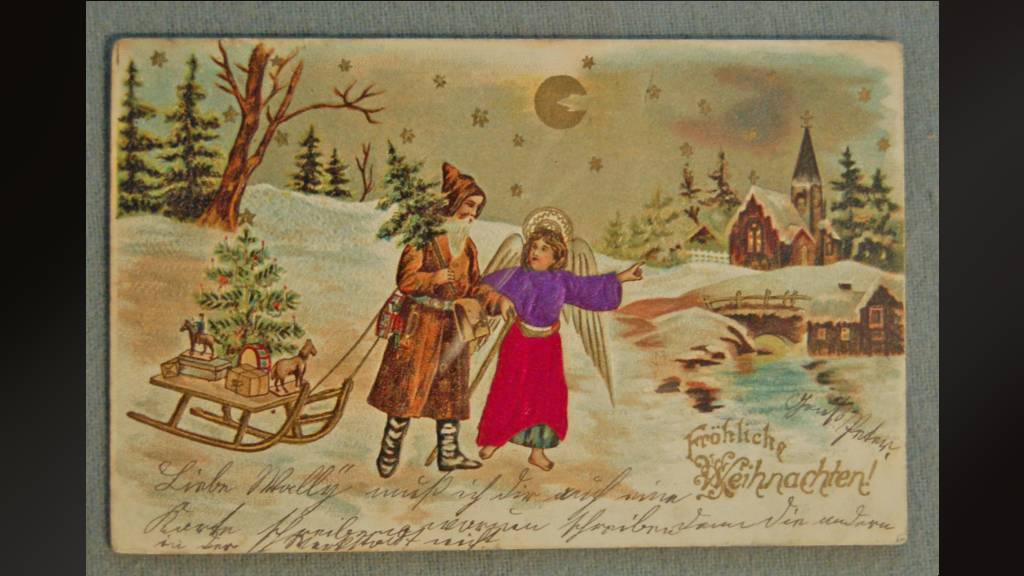 A Christmas card from 1900 representing Christkind. /Wikimedia Commons
A Christmas card from 1900 representing Christkind. /Wikimedia CommonsIn contrast to her portly, jolly, and very much male counterpart, Christkind is an angelic female figure, slim in the waist, and often garbed in white, silver, or gold attire. Instead of donning a fur-lined floppy hat, she is most commonly depicted with a crown or dazzling halo over her head.
Granted the power of flight not by reindeer or slay, but by her wings, Christkind flits from house to house to deliver gifts, without once having to shimmy down a chimney. And thanks to her more practical powers of levitation, she even helps adorn the Christmas tree.
More practical still (for the postman at least), instead of children having to send their wish list all the way to the North Pole, they simply have to address letters to her postcode in the considerably closer Austrian town of Christkindl - which also happens to be a real location.
The origins of Christkind trace back to Martin Luther, the Protestant reformer, who wanted to shift the focus from Saint Nick's gift-giving to celebrating the birth of Christ - hence Christkind's angelic appearance. But it's not all meek and mild in Austria: there are some decidedly more Pagan elements to Christmas there, some which are truly terrifying, such as the Krampus.

A Christmas card from the early 1900s shows the Krampus, St. Nick's evil counterpart. /Wikimedia Commons
Saint Nick's vicious counterpart is depicted with horns, fur, and grotesque appendages, and while Nicholas is busy gift-giving, the Krampus has the task of punishing naughty children. Those that have misbehaved, he beats with thin wooden sticks, and in some stories kidnaps them in his large sack, carrying the children away to be either tortured, drowned, or spend eternity burning in Hell.
While the Krampus story has been banned in Austria at certain points due to its severity, today it has regained a certain popularity, spawning Krampus festivals where locals dress up as Krampuses and chase after children in the street, hitting them with birch rods. The upside of the tradition? After the festive beatings, the children are given some candy.
See CGTN's exclusive Krampus content for more
06:01
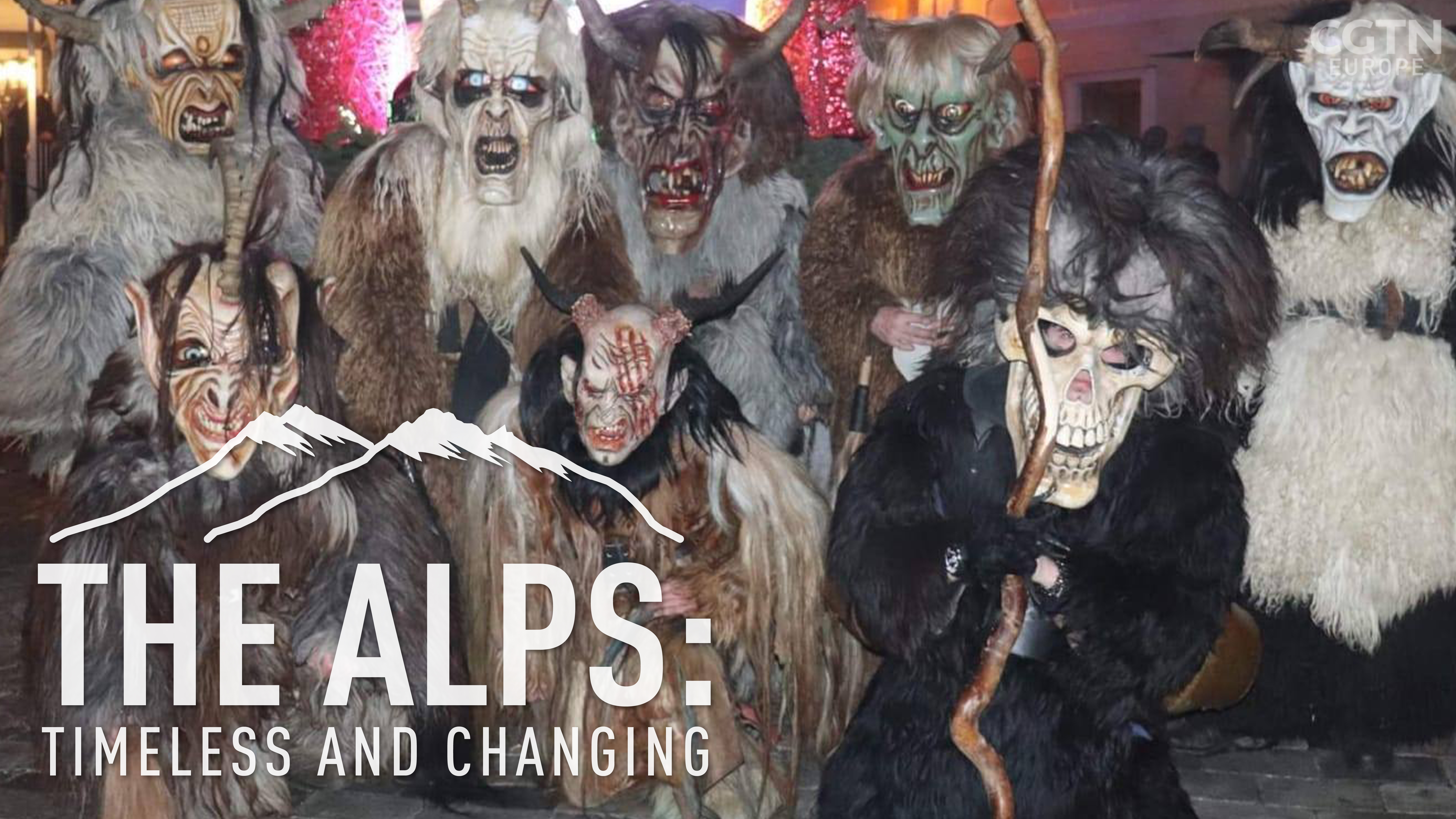
Iceland's xmas ogres and trolls
Over on the other side of Europe, Icelandic folklore decrees that Christmas is the time that mountain-dwelling monsters come to town. As in Austria, Iceland's hellish yuletide figures are used to scare children into good behavior. And despite their family values, they are just as terrifying as their central European counterparts.
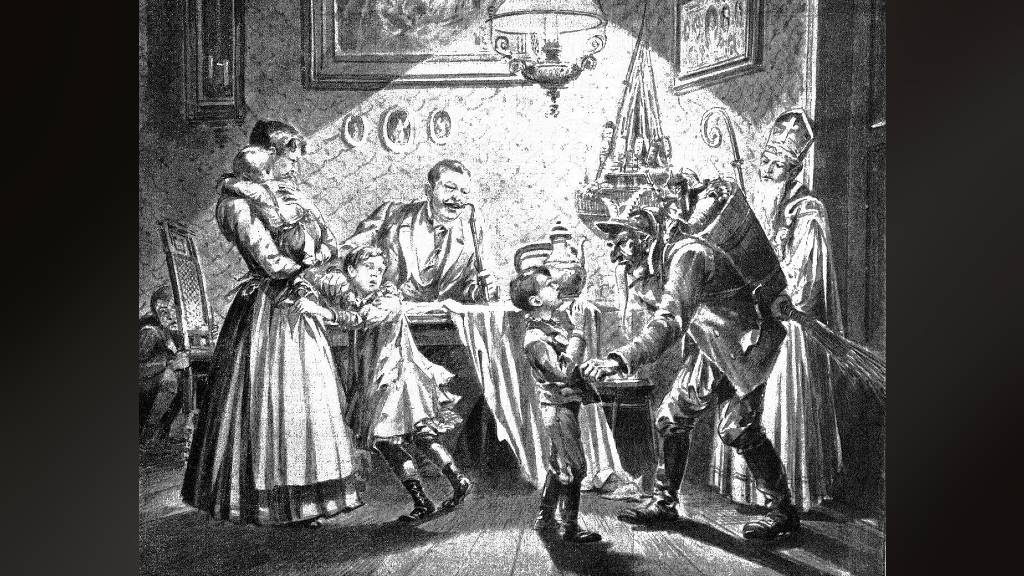
An Austrian take on Christmas: St. Nicholas and the Krampus arrive. /CFP
Iceland's Christmas cast include Gryla the ogress, her mischievous children the Yule Lads, and their ferocious family feline, the Yule Cat. During their family downtime from Spring to Autumn, they live together in the foreboding lava fortress of Dimmuborgir in the island's north, but during the Christmas period, they come to life in a petrifying fashion.
Gryla is the materfamilias of the household and is known for eating the flesh of mischievous Icelandic infants, stealing them and boiling them in her large pot. In contrast, her ogre husband Leppaluoi, is meant to be lazy and prefers to stay at home, leaving both the cooking and kiddy-snatching to his wife.
Their offspring, the Yule Lads, a group of 13 mischievous and filthy trolls, can be kinder – they leave treats in the shoes and on the windowsills of well-behaved children. However, those that have been naughty, they treat to theft and harassment, each in their own characteristic style.
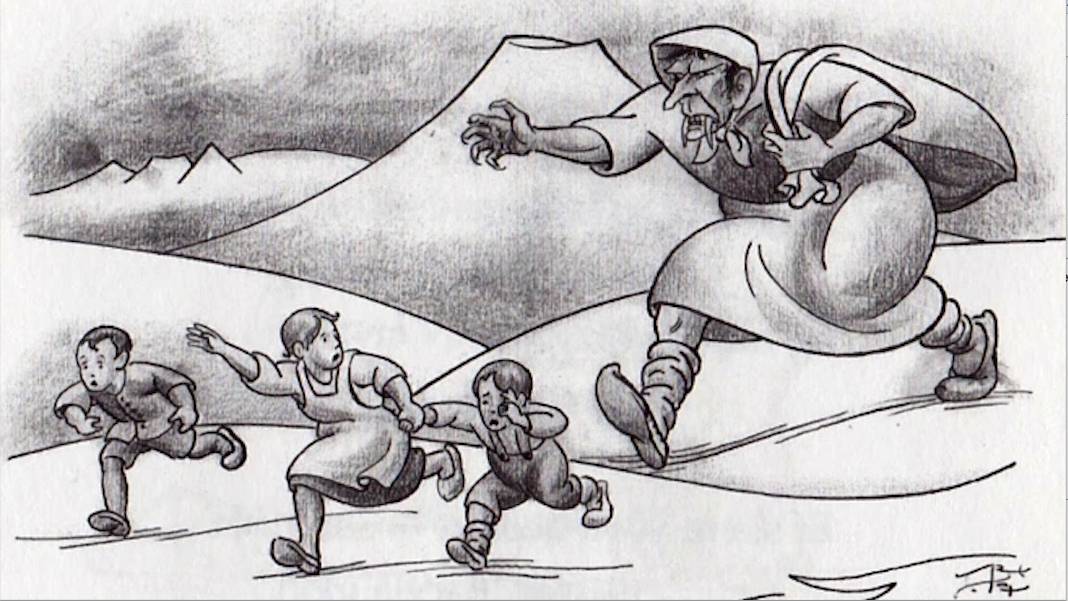
Tryggvi Magnusson's drawing of Grýla chasing children. /Wikimedia Commons
For example, the ninth Yule Lad – Bjugnakraekir, or 'Sausage-Snatcher' – has a penchant for bjuga, Icelandic smoked sausages prepared during the Christmas season. He enjoys swiping them from undeserving homes around the island. Another Yule Lad, Stekkjarstaur, or 'Sheep-Cote Clod', goes around villages harassing villagers' sheep. Meanwhile, his brother Huroaskellir, or 'Door-Slammer', likes to wake people up in the middle of the night by slamming their doors.
Finally, there's the Yule Cat, a massive, vicious feline that roams the snowy countryside, eating those who have not received any new clothes to wear before Christmas Eve. In the last few decades, Iceland has tried to soften the image of these Christmas ogres, trolls and predators, but Gryla and her cat continue to strike fear into the hearts of Icelandic children.
Italy's La Befana, the Christmas Witch
While Santa's arrival in most parts of the world usually coincides with Christmas Eve, Italy's folkloric gift giver, La Befana the Christmas Witch, comes to town on the Twelfth Day of Christmas, as the song goes, marking the coming of the Christian festival of Epiphany.
La Befana, often depicted in modern renditions as an elderly woman in a dark shawl, carries a broom and dons a kerchief, but she defies the stereotype of Europe's more malevolent witches. A kindly magical grandmother as opposed to an evil soothsayer, she is usually depicted as smiling, carrying baskets laden with goodies.
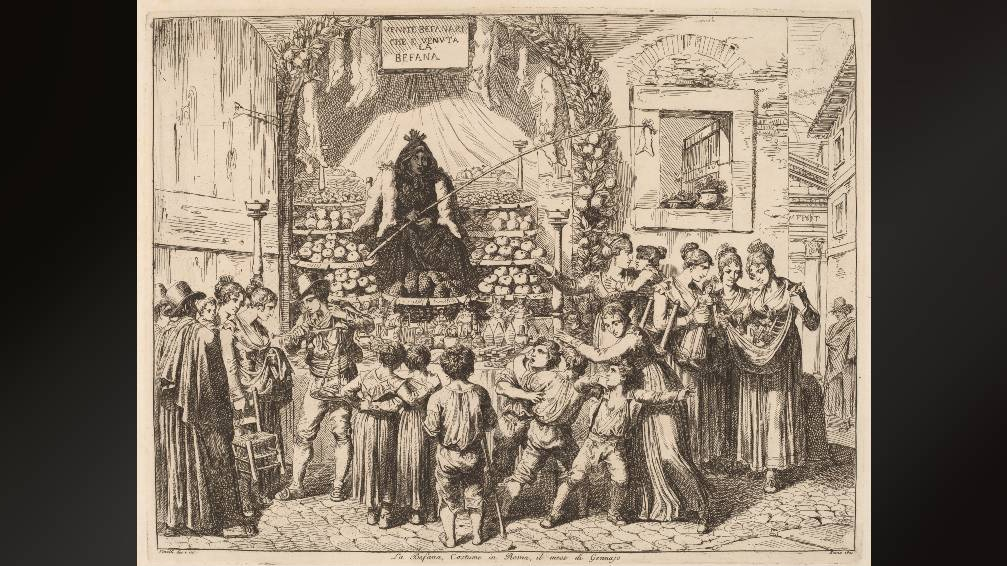
La Befana or Italy's Christmas Witch by Bartolomeo Pinelli. /Wikimedia Commons
The origins of Befana's name stem from "Epifania" and suggest ties to the biblical story of the Three Kings and their visit to the baby Jesus in Bethlehem. In some tales, Befana encountered the Three Kings while engrossed in her housekeeping. Despite initially declining to join them on their journey, she later wanted to seek out the infant, but unable to catch up, she was left instead to run after the Kings bearing her basket of gifts.
In keeping with the most popular Western Christmas tales, well-behaved children receive treats from Befana, while the mischievous might find coal in their stockings. And like Father Christmas, La Befana also enters houses via the chimney, draped in a soot-caked shawl, which symbolizes the clearing of the old year as she sweeps homes before her departure.
Italy continues to revere Befana, celebrating her in cities and towns across the country, especially in the commune of Urbania, her traditional home, which hosts a grand festival every year. Attracting thousands with dancing, singing, scores of Befanas roam the village distributing sweets to eager children.
Catalonia's present-pooping Christmas log
While some of Europe's alternative Christmas tales range from Christmas-pudding sweet to disturbingly macabre, Spain's Catalonia perhaps boasts the most bizarre tradition – that of Tio de Nadal, the Christmas log that excretes presents.
A customary feature in Catalan households during the holidays, Tio de Nadal is a hollow log measuring around 30 centimeters long. While in days of yore, it would simply be a natural piece of dead wood, today's Tio tends to stand on stick legs, sporting a smiling face, a miniature red sock hat, and sometimes a three-dimensional nose.
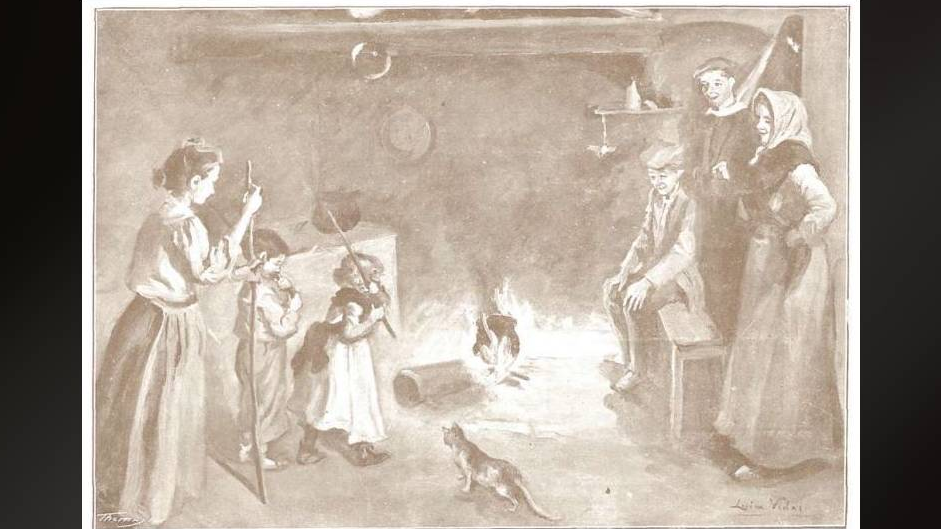
A painting from 1907 shows the Catalan tradition of Tio de Nadal. /Wikimedia Commons
Starting from the Christian Feast of the Immaculate Conception on December 8, each night, Tio receives some "food" and is covered with a blanket to keep it warm. The tradition holds that children must look after the log, nurturing it so that it poops presents on Christmas Day or Eve.
On Christmas, families historically placed the Tio partially into the fireplace, which was thought to help it release its presents. For those wondering about the practicalities here, children tend to leave the room while their relatives are given time to place the Tio's gifts by the hearth. Another Catalan Christmas laxative is hitting the Tio with sticks while singing. Toilet-humor and Christmas – the Tio should act as a yuletide inspiration to young children around the world.
No comments:
Post a Comment